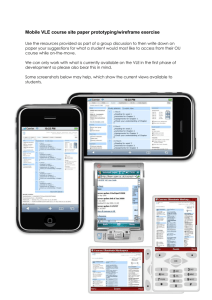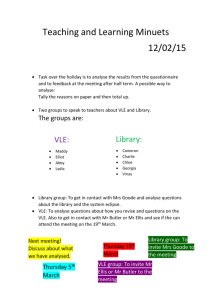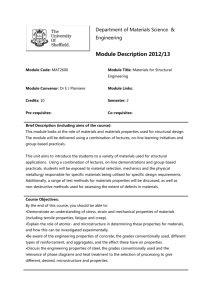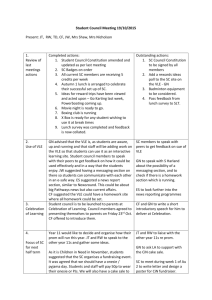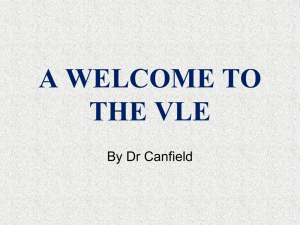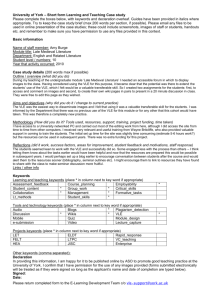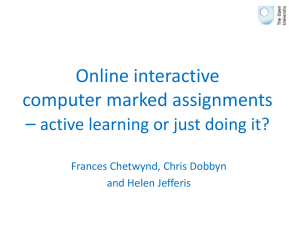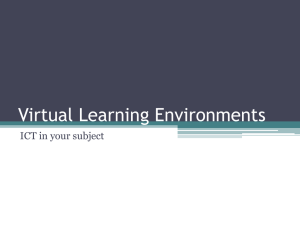On-line resources to help students maximise their learning in
advertisement
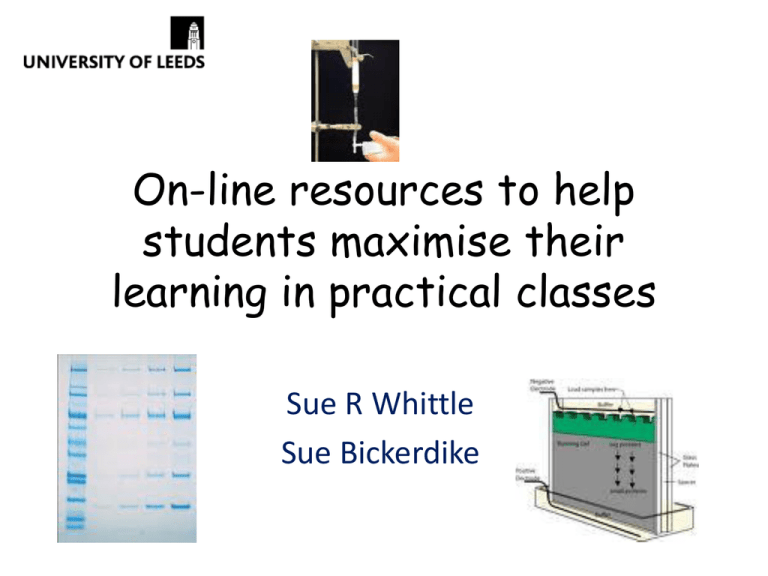
On-line resources to help students maximise their learning in practical classes Sue R Whittle Sue Bickerdike Background A growing concern about students’ practical skills Whittle, SR, Pell, G & Murdoch-Eaton, DG (2010) Journal of Further & Higher Education 34 (4), 557-570 . Increased focus on developing practical skills Separate practical skills module Increase practice in laboratory Take more responsibility for planning experiments Recording results as experiment progresses Preparing for practical classes Reading module manual Recommended reading from texts Answering ‘preparation questions’ Receiving feedback on preparation during the class BUT ….. • • • • Students found it hard to prepare effectively Staff didn’t always find time to check preparation Misunderstandings not addressed at the start of class Confusion leads to mistakes and frustration ADF bid - objectives 1. support students in preparing for laboratory practicals using interactive materials to improve their understanding of techniques involved, and their engagement with self-directed learning from the start of their university studies 2. improve the formative feedback they receive prior to practicals 3. introduce students to techniques used in the research environment which are unavailable in teaching laboratories Using the VLE to improve the student experience On-line preparation materials: Theoretical background to technique – text, diagrams, animations How to use equipment – video, photographs On-line self-assessment linked to Gradebook Practical topics addressed • Spectrophotometry • pH & buffers • molecular exclusion chromatography • ion exchange chromatography • affinity chromatography (IMAC) • thermodynamic determinations • SDS polyacrylamide gel electrophoresis • enzyme assays (kinetics & inhibition studies) • molecular biology techniques(PCR, restriction digestion) • agarose gel electrophoresis Units supporting wider aspects of the module • Laboratory safety • Recording experimental data (Using a lab notebook effectively) • Writing practical reports Initial evaluation – compulsory tasks Completion of on-line preparation (biochemistry) 70.0 60.0 % students 50.0 40.0 30.0 20.0 10.0 0.0 100 90 80 70 60 20 10 % tasks completed 90% of cohort completed 9/10 tasks Usage of non-compulsory materials variable Resource Lab safety % students accessed 49 Writing a lab book 78 Writing a practical report 79 pH & buffers practice exercises (action mazes) 14 Separating protein practice exercises (action mazes) 23 Feedback on Resources for ‘Separating Biological Molecules’ Question It was easy to access the pre-practical information on the VLE. Score The structure and the layout of the VLE pre-practical information was clear and easy to understand. 3.8 The video demonstrations of the methods to be used in the practical gave me a clear idea of what I was expected to do. 3.8 4.0 The pre-practical information helped me to understand the theoretical background to the techniques I was going to perform in class. 3.8 The information and video demonstrations helped me to understand the procedures I had to conduct. 3.8 The pre-practical briefing via the VLE enabled me to work at my own pace allowing me to get a better understanding of the work to be done. 3.8 n = 16 (20%) Feedback on Resources for ‘Separating Biological Molecules’ Question The combination of commentary with video and still photographs was effective in describing the work to be undertaken. Score The pre-practical information helped me understand the material delivered in lectures on separating biological molecules. 3.9 I would like to see this type of pre-practical briefing used for other complex practical exercises. 4.3 The additional quizzes and MCQs gave me the opportunity to test my understanding of the theory behind the practicals. 4.1 3.8 The action maze quizzes on pH and buffers helped with my understanding of 3.4 the subject. The action mazes on separation techniques helped me to design my experiments. 3.1 What did you like about the prepractical information? ‘The information provided helped me to gain a better understanding on what had already been discussed in lectures.’ ‘It provided clear and specific theoretical information, which was difficult to ascertain simply from reading the manual. Using the pre-practical information let me understand what it is I was doing, and why it worked.’ ‘It is nice to have information to use in order to understand the experimental techniques that we would be using in the Lab sessions.’ What did you dislike about the prepractical information? ‘I didn't feel there was enough information on how to read SDSPAGE results. It would have been helpful if an actual SDS-PAGE photograph had been shown so that it was clear how to measure distances migrated versus the standard proteins from the origin.’ ‘Certain parts, especially mathematical equations or calculations were not explained very well.’ ‘Some of the videos were VERY long. They could have been shorter and I found myself getting bored.’ Lessons learnt so far Usage of ‘compulsory’ materials has been very good Usage of ‘extension’ and ‘revision’ materials has been variable/poor so far Students have found the materials easy to access and use Resources available for use On the VLE institution/BS/xShare/learningobjects Soon via JORUMOPEN JORUMOPEN versions are licensed under a Creative Commons license and contain all the source files that will enable users to amend them to their specific requirements if necessary
